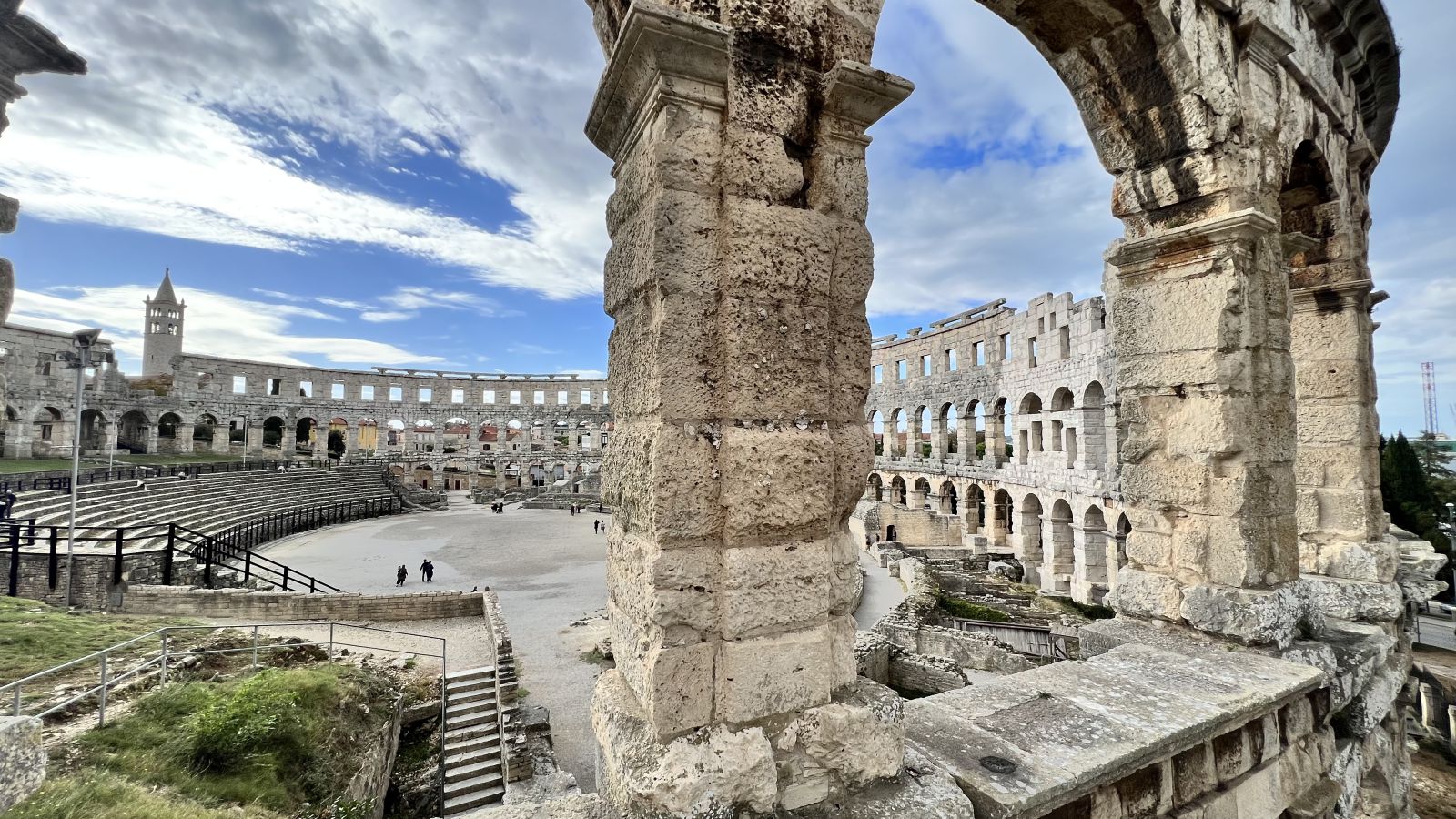
Istria is a Mediterranean gem, everyone knows that. But I had to check that out… July arrived and I discovered a land where the Adriatic Sea embraces green hills, where every village tells a thousand-year-old story, and where the stones themselves seem to echo the past.
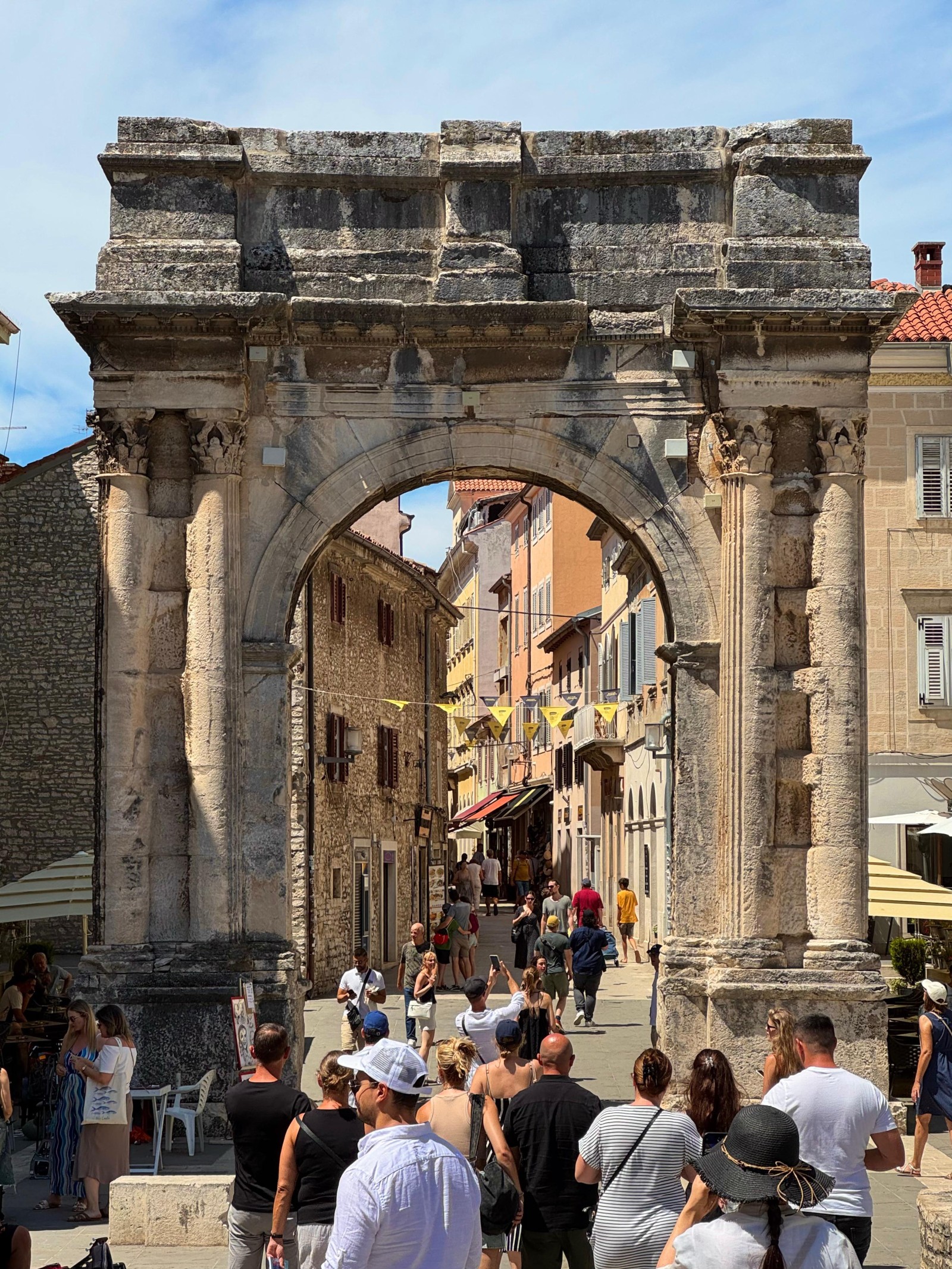
Istria, often called Terra Magica, is one of the most fascinating destinations in Croatia, a true blend of history, culture, gastronomy, and nature. When people ask about the best places to visit in Croatia, this peninsula is always high on the list — and for a good reason. Here you don’t just travel, you experience. From the Roman amphitheatre in Pula to the Venetian charm of Rovinj, Istria is where Croatian tourist attractions become unforgettable memories.

I had the chance to discover two of its treasures :
Pula and Rovinj, guided by passionate locals who love their city and their craft, and who opened the doors to their secrets for us.
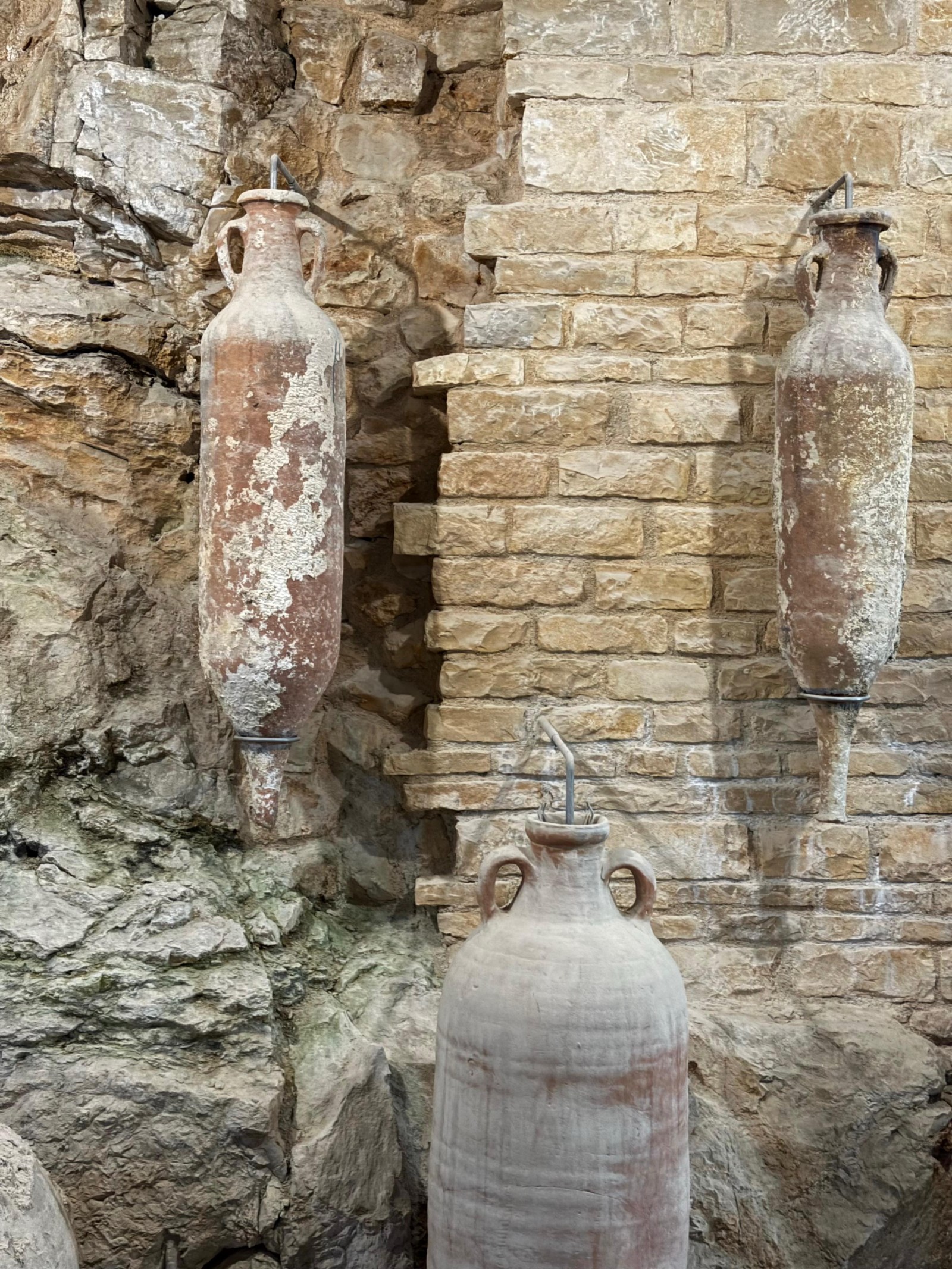
Pula, an architectural treasure
My journey began in Pula, and from the very first steps, we were dazzled by the majesty of its amphitheatre ! Built in the 1st century under Emperor Vespasian, it is one of the six largest Roman amphitheatres still standing, and one of the best preserved in the world. With its 32 meters in height and seating for over 20,000 spectators, it once hosted gladiator fights and public games. Unlike Rome’s Colosseum, it has an irresistible advantage… the sea at its feet !

We even explored its underground chambers, where a fascinating exhibition awaited us, dedicated to Istria’s long-standing olive oil tradition. Among the stone walls, massive ancient machines told the story of producing exceptional olive oil, arguably the best in the world (sorry, dear Dalmatia).

Our stroll continued through Pula’s lively streets, all the way to its historic market. Beneath an elegant 19th-century iron-and-glass hall, silver-scaled fish, seafood, fresh meats, colorful fruits and vegetables, and fragrant bouquets filled the stalls. Outside, more vendors set up under the shade of trees.

Next, our guide led us into a vast underground network of tunnels built in the early 20th century as wartime shelters. Their maze is so extensive that we would surely have gotten lost without her. Emerging from the darkness, we climbed the hill to the fortress of the citadel. Built by the Venetians in the 17th century to protect the city from maritime attacks, the stronghold offers a breathtaking panoramic view, 360 degrees over Pula, the Adriatic Sea, and even the amphitheatre. This is not to be missed if you come to visit Croatia!

What followed was a step back in time through narrow streets that still carry an Italian soul. The city was once ruled by the Republic of Venice, which explains its colorful façades and lively squares. Roman remains are everywhere : the ancient gates of Sergius, Hercules, and the Twin Gates ; the Temple of Augustus on the Forum square… And, tucked away, a stunning mosaic depicting the mythological punishment of Dirce, exquisitely preserved and revealed to us by our guide as if it were a secret treasure.

As the day drew to a close, we wandered through Titov Park, just next to the amphitheatre, where the Adriatic sunset set the sky ablaze. When night fell, the city’s famous Lighting Giants, illuminated shipyard cranes, gave the waterfront a poetic glow. To end the evening, we returned to where it all began : the amphitheatre, this time transformed into an open-air cinema for the Pula Film Festival, which it has hosted every July since 1954. A truly unique setting in which to experience the magic of film !
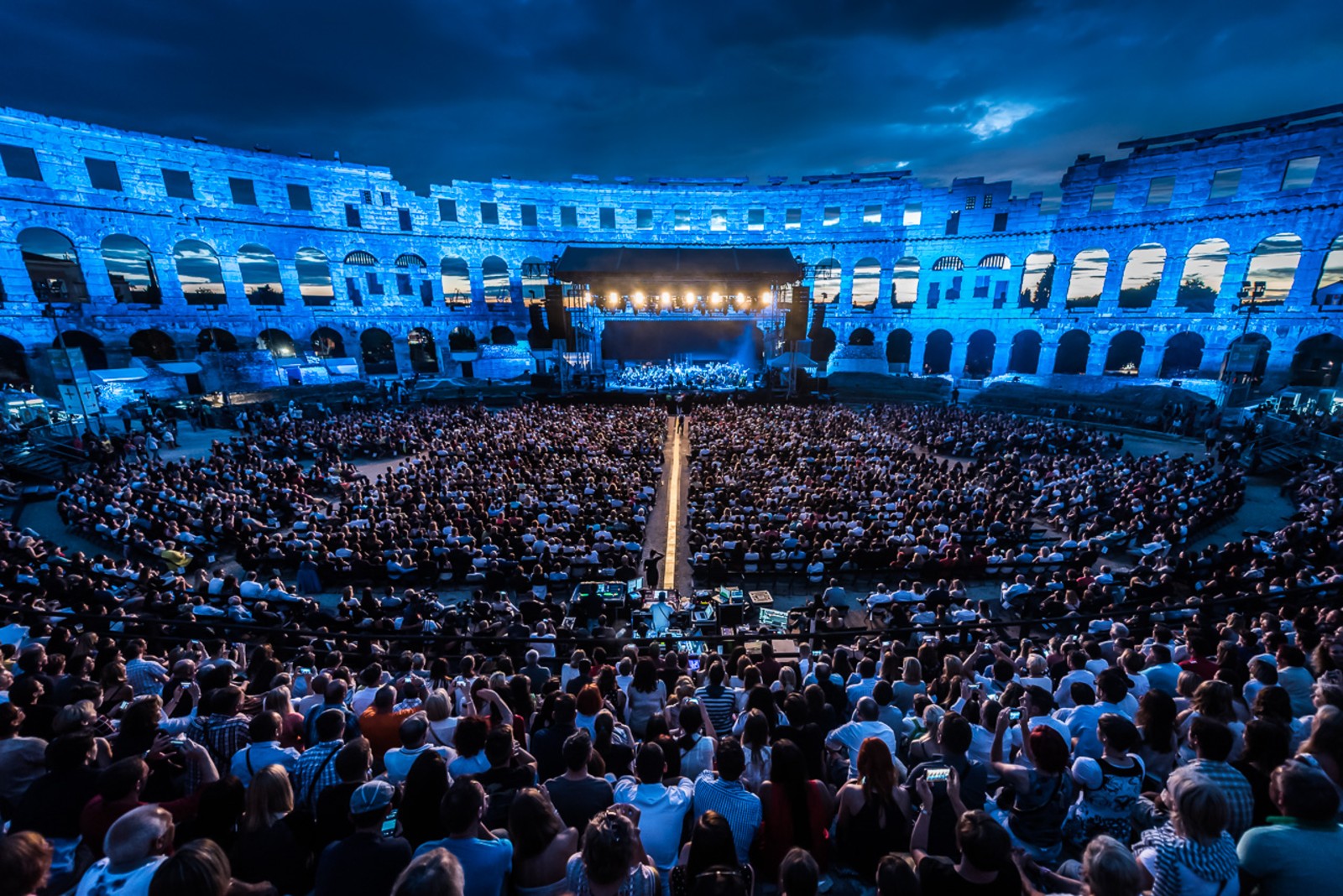
The city we dream of, Rovinj
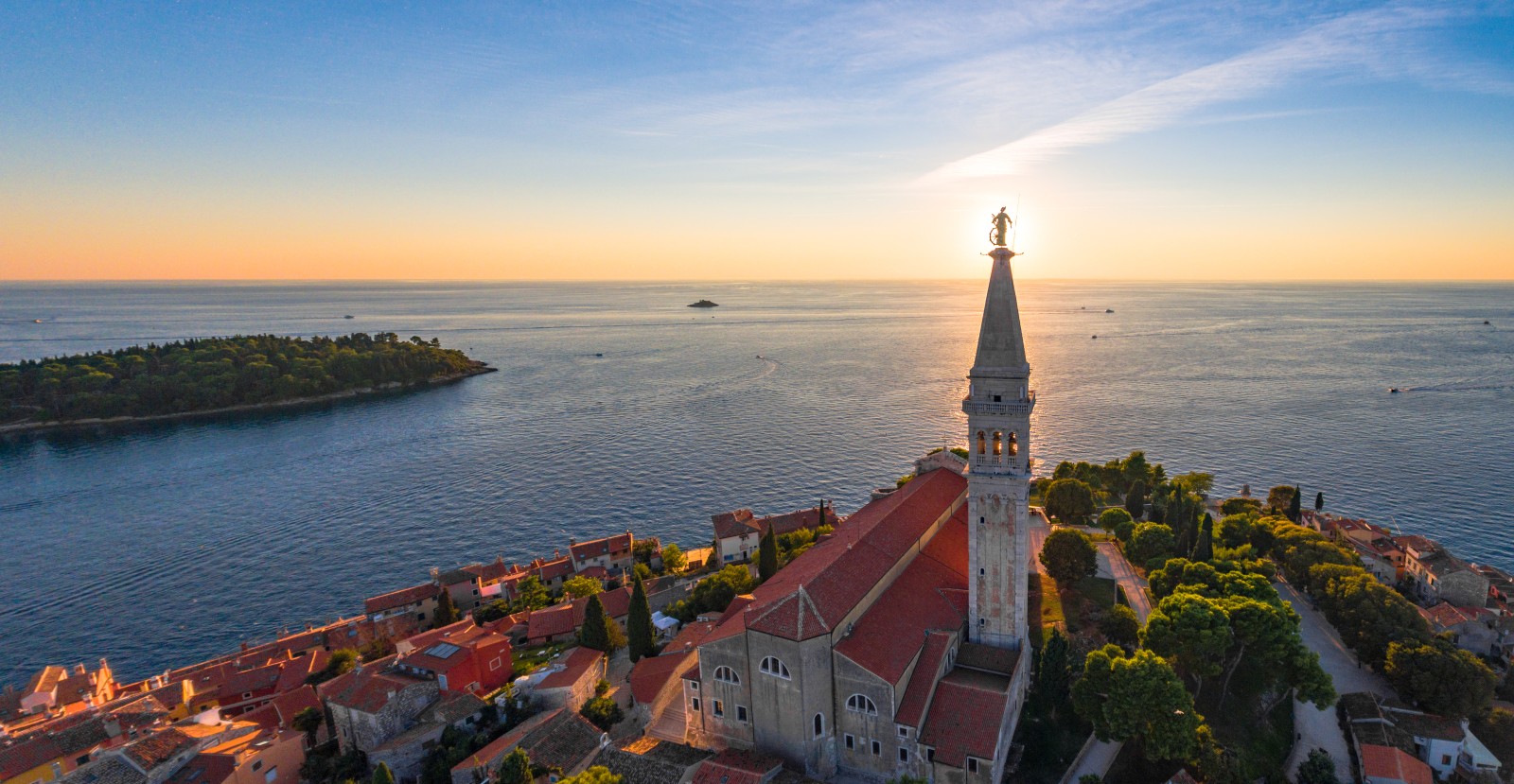
After Pula, our excursion took us to what would become a true favorite : Rovinj.
I had already seen pictures on social media of its old town, appearing like an island floating in the Adriatic… and I wasn’t far from the truth.
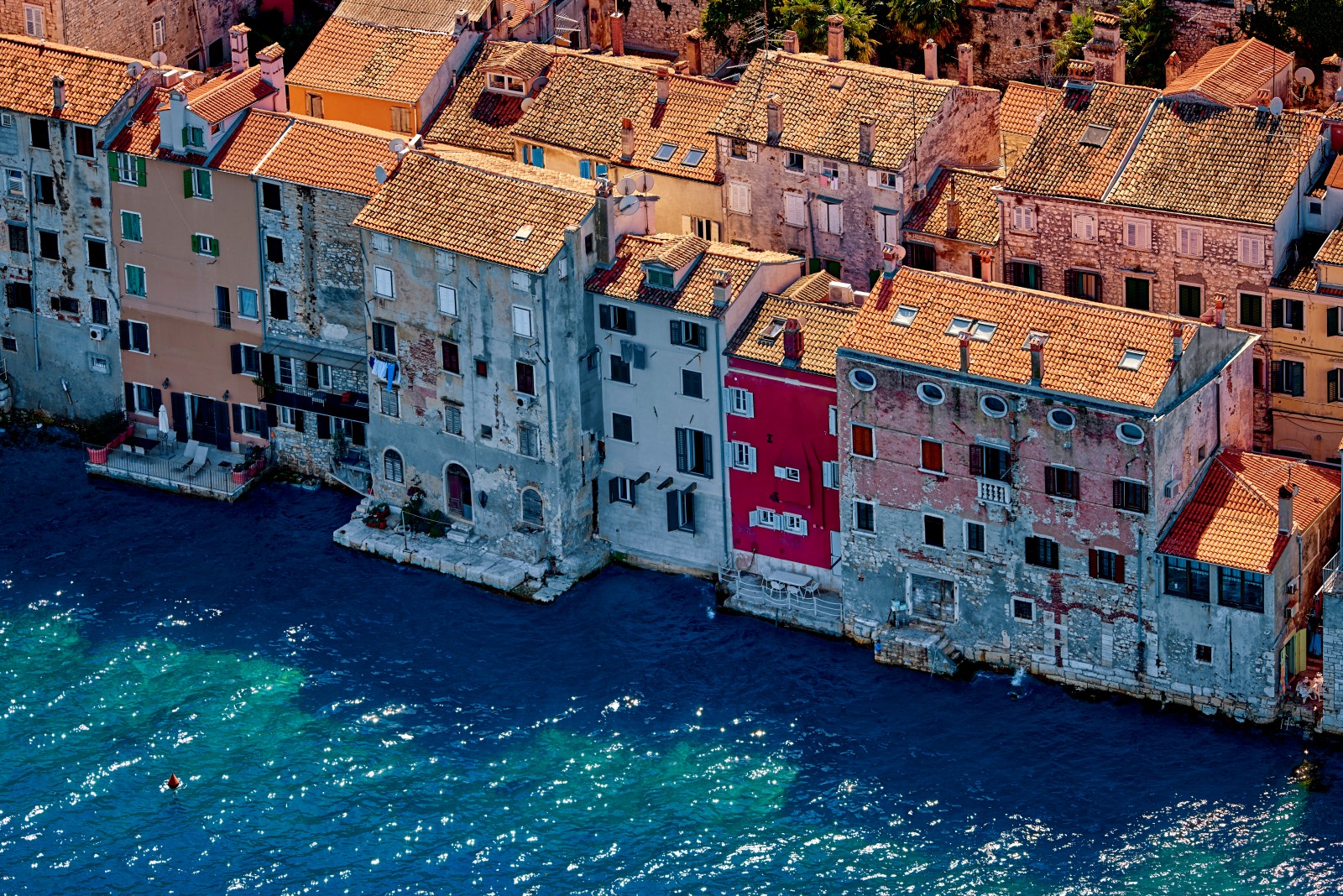
Our guide met us at the spot where bridges once connected the mainland to the old town, which indeed remained an island until the 18th century. At that time, ramparts completely surrounded the settlement. But in 1763, with the city growing too cramped, part of the fortifications was dismantled and the channel separating the island from the mainland was filled in. This transformation turned Rovinj into a stunning peninsula.
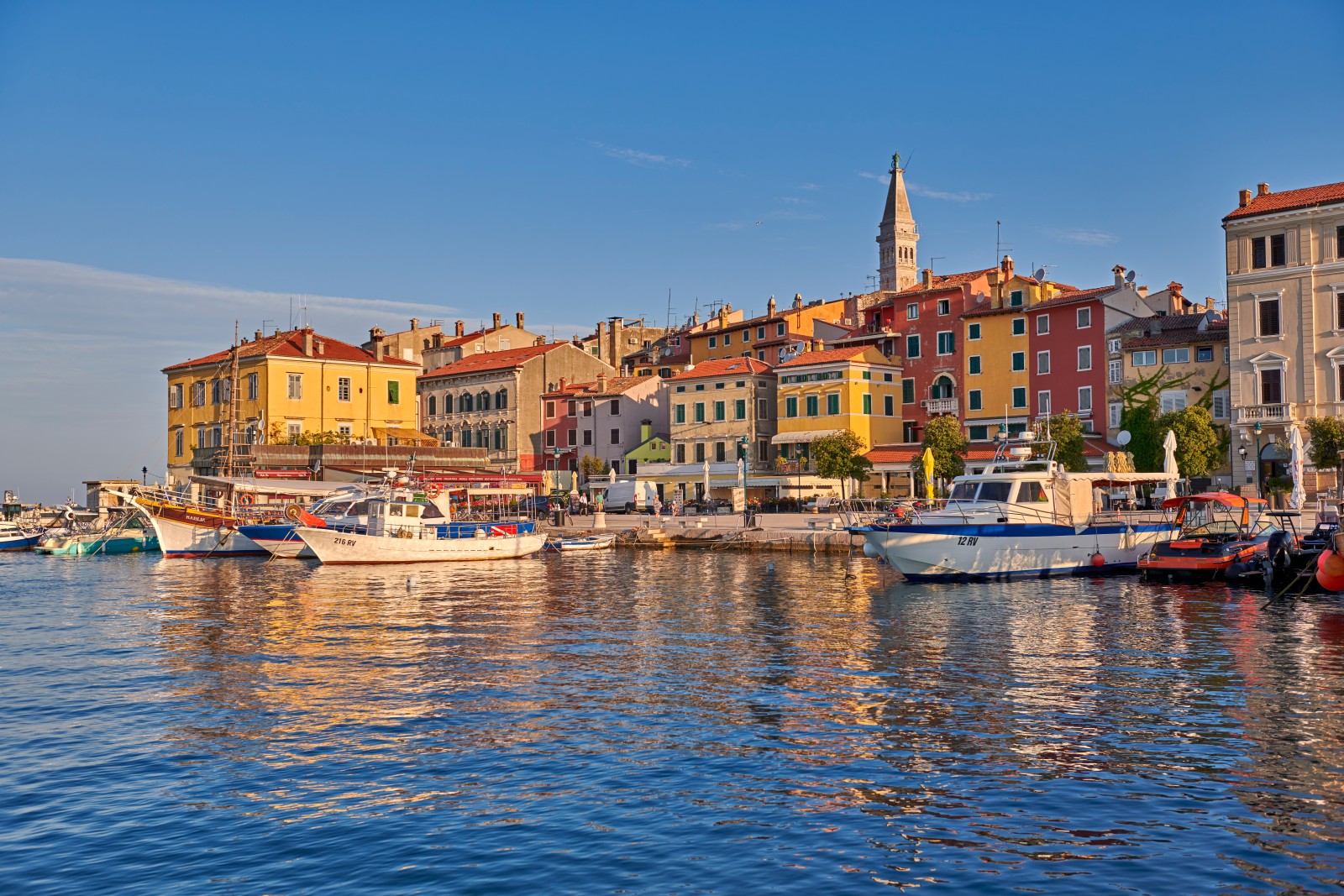
Bridge Square is now an unmissable stop, a lively crossroads where all the main streets converge, lined with shops, cafés, and constant activity. We soon made our way to another emblematic spot : Trg Maršala Tita, a charming square bordered by beautifully preserved buildings showcasing a mix of architectural styles, each layer telling the story of the city’s evolution. Our eyes were immediately drawn to Balbi’s Arch, built in 1679, decorated with a carved head of a Turk and topped by a Venetian lion : vivid reminders of the Ottoman and Venetian dominations. Passing through it, we entered the winding, cobblestoned streets of the old town.

The polished stones, worn smooth and slippery by centuries of footsteps, slowed our pace and allowed us to take in every detail : Matteotti Square, the charming Grisia Street lined with galleries and artisan workshops, and finally, at the hill’s summit, the Church of St. Euphemia. This masterpiece of sacred architecture, over 50 meters long and 30 meters wide, is crowned by a slender bell tower reminiscent of Venice’s St. Mark’s Campanile ! I braved (and slightly feared) the steep, narrow staircase to the very top. The reward was extraordinary : a sweeping view of the old town, the vast Adriatic, and the graceful statue of St. Euphemia gazing over the horizon.
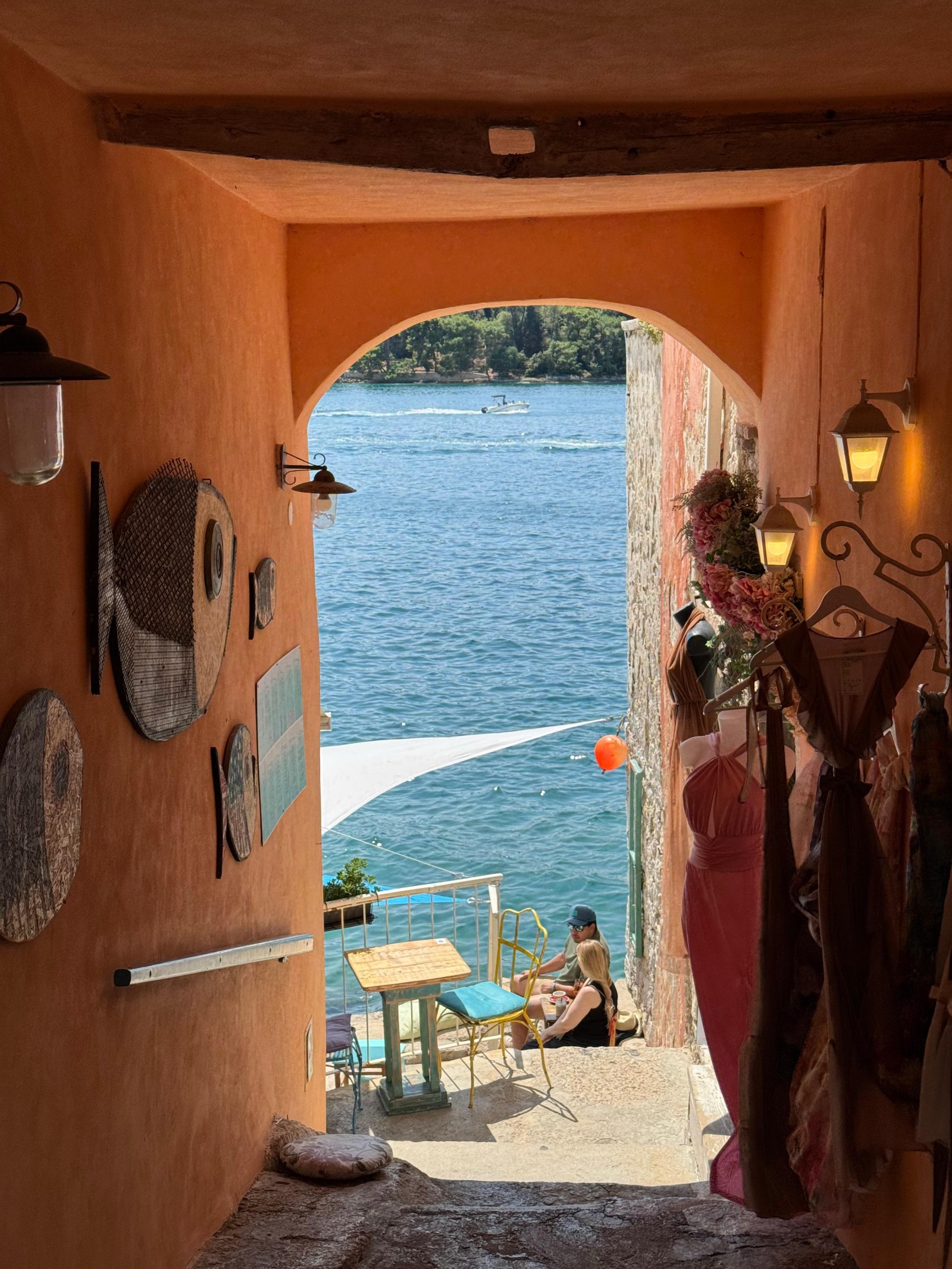
On the way down, we followed the ramparts along a pine-shaded path that led us to the lighthouse and the old cannons that once defended the city from enemy ships. The walk continued to Balota Beach, a rocky cove with steps carved into the stone for easy swimming. A delightful and unexpected find !
Our journey ended at the harbor, where the old town, bathed in the golden glow of the setting sun, etched Rovinj forever in our memories.

Why Istria belongs to the best Croatia experiences
If you are wondering about the best places to go in Croatia, or searching for the most authentic Croatian attractions, then both Pula and Rovinj should be at the top of your list. Istria offers a perfect mix of cultural heritage, natural beauty, and Mediterranean lifestyle — making it one of the most rewarding regions to explore when you decide to go to Croatia.
And that’s what makes Croatia a beautiful country — one that keeps calling you back for more discoveries.













